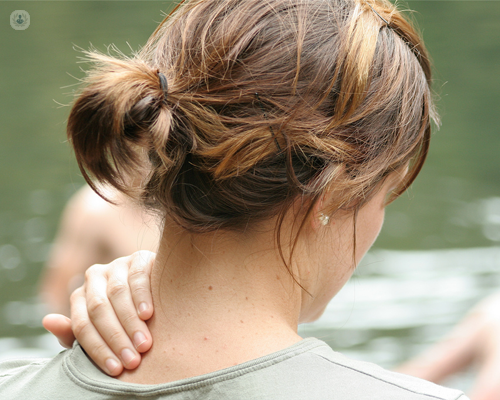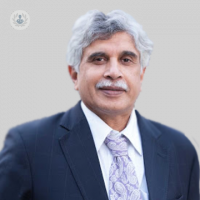Costochondritis
Mr Shyamsunder Kolvekar - Cardiothoracic surgery
Created on: 06-07-2016
Updated on: 04-18-2023
Edited by: Carlota Pano
What is costochondritis?
Costochondritis is a painful condition caused by the inflammation of the cartilage that joins the upper ribs with the rib cage. The condition causes chest pain, and while it is painful, it is relatively harmless and the pain often goes away on its own without treatment.
Usually affecting adults aged 40 and over, costochondritis doesn't cause permament damage, but it can sometimes relapse.
What are the symptoms?
The main symptoms are sharp chest pain (usually between the fourth, fifth and sixth rib) and tenderness, although it can also affect the abdomen or the back.
The pain, which is very often caused by the numbness, is diffused and mainly affects the left side of the chest. It can worsen with upper body movements, coughing, physical activity or deep breathing.
What are the causes?
There usually isn't a cause for costochondritis but the condition has sometimes been linked to:
- chest injury: usually provoked by an impact while practicing sports (rugby, football…)
- arthritis: rheumatoid arthritis and psoriatic arthritis, spondylitis
- bacterial infections: tuberculosis, syphilis, candida, salmonella, aspergillosis and other infections affecting the respiratory system
- physical activity: persistent cough, lifting heavy objects
- tumours: breast, thyroid or lung cancer
- fibromyalgia: pain and increased muscular stiffness affecting the musculoskeletal system.

How is costochondritis diagnosed?
If you have symptoms of costochondritis, your doctor will examine your upper chest area (around the costochondral joint) and ask you where the pain occurs. Your doctor might also want to take a look at your medical history.
Some tests may need to be carried out before a costochondritis diagnosis can be confirmed, such as:
- ECG (electrocardiogram) to record the electrical activity of your heart
- blood test to check for inflammation
- X-ray of the chest
What is the treatment?
Costochondritis can be treated with: non-steroidal anti-inflammatory drugs, rest, alternation of hot and cold packs over the affected area, and physiotherapy. Treatment will focus on relieving pain.
Avoid any type of activity that places stress on your chest area, including physical exercise and simple chest movements, until the inflammation is better.
Which specialist should you visit?
Don't ignore long-term chest pain. Pay a visit to your GP, who can find out the cause and refer you for specialist treatment if necessary.
Chest pain due to costochondritis might be mistaken with chest pain caused by more serious conditions, like a heart attack. Call an ambulance if you experience sudden chest pain and believe it could be a heart attack.
Costochondritis and pregnancy
Due to the expansion of the rib cage during pregnancy (mostly in the last trimester), some pregnant women may experience costochondritis in the upper and lower ribs.
If you're pregnant, your doctor might advise hot and cold packs or gentle stretching to help alleviate chest pain and painful breathing.
Why is costochondritis worse at night?
Costochondritis might feel worse when you lay down to sleep because your body weight causes further straining onto the already stretched rib joints around your back. Sleeping in an elevated position can help to reduce the degree of pain.
How long can costochondritis last for?
Costochondritis will usually heal on its own in one to three weeks' time, although in some cases, it can last from a few weeks to several months. Almost all cases of costochondritis will be resolved within a year.
What if costochondritis returns?
A relapse occurs when costochondritis returns after it heals. In this case, you will need to seek long-term medical care and advice to reduce the impact of costochondritis on your quality of life.
Straining the affected areas can cause your pain to return. That is why rest is an essential part of the recovery process for costochondritis.
